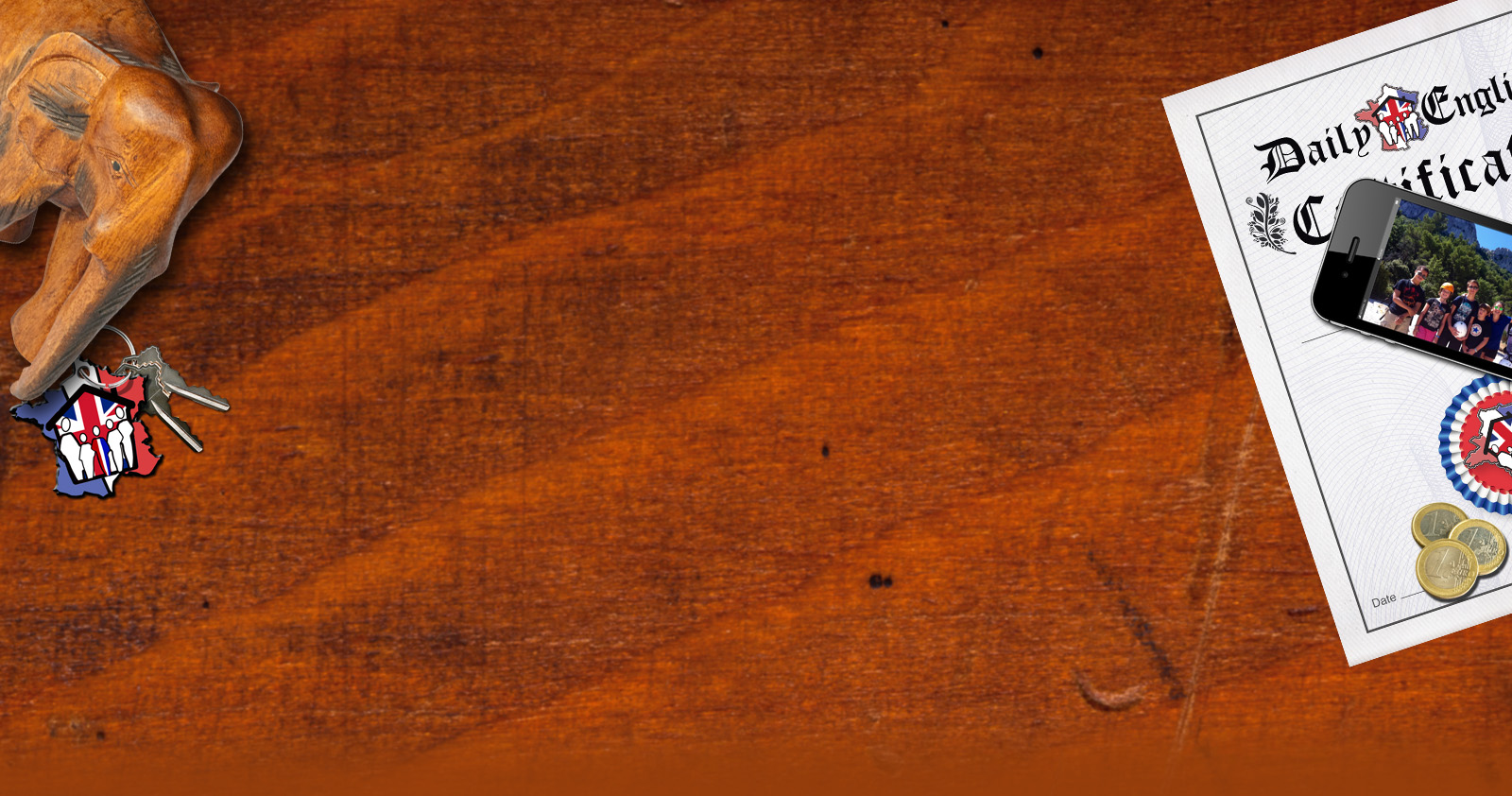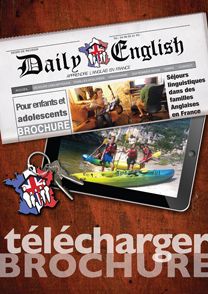English teachers know that the gap between formal English and everyday spoken English is huge. However, for teachers with a native or extremely high level of fluency, this is something that is easy to forget. Part of the reason we rarely notice how much slang creeps into everyday English is that we hear it all around us – when conversing with native speakers, on TV, in pop music, etc. In fact, many EFL-students may only have been exposed to informal English prior to their language studies. However, this exposure can create problems of its own: these students are unlikely to know the appropriate circumstances to use English slang, and will often speak in overly informal ways in situations requiring a more formal tone. On the other hand, for students with little to no exposure to informal and slang English, whole sections of informal conversation may be impossible to understand.
In this article, we will outline how to deal with these two aspects of teaching English slang in your EFL classroom. For students who are not familiar with informal and slang English, the article outlines techniques to introduce informal English in the classroom. For students who are already familiar with English slang, the article discusses how to help students practice its use and explain the various settings in which such informal language is appropriate.
Contractions
One of the most common forms of slang in English consists in the use of contracted versions of words. Once the student understands the pattern, these should be quite easy to pick up on.
There are two things to do when explaining this form of slang: first, make sure it sticks – this is the easy part. One approach we love is using pop songs from the ‘80s and ‘90s, which will often be familiar to students. They will love making fun of these outdated songs, and the slang terms will stick in the process!
|
Slang Contraction |
Formal Phrase |
Example Song |
|
Gonna |
Going to |
Everything's gonna be alright (Bob Marley) |
|
Wanna |
Want to |
I wanna dance with somebody (Whitney Houston) |
|
Gotta |
Got to |
It’s gotta be you (Backstreet Boys) |
|
Gimme |
Give me |
Gimme gimme gimme (Abba) |
For students who are just starting to learn slang, repeat this process each class, introducing a few new terms with examples (either sentences you make up or songs, movie clips or excerpts from books).
For students with a better grasp of English, you want to establish the patterns used for contractions. After presenting a few examples, write new slang contractions on the blackboard and ask students to tell you what they would be in formal English. Then have students give you example sentences using the slang terms:
|
Slang Contraction |
Formal Phrase |
Example sentence |
|
Kinda |
Kind of |
He’s kinda cute, although I don’t like blonde guys. |
|
Sorta |
Sort of |
I sorta like her, I guess. |
|
Haveta |
Have to |
I haveta go now or I’ll be late. |
|
Coulda |
Could have |
I coulda graduated last year. |
|
Woulda |
Would have |
Then I woulda had a job by now. |
|
Shoulda |
Should have |
I really shoulda studied harder. |
|
Lemme |
Let me |
Lemme see your new tattoo! |
Finally, make sure to teach your students, no matter their level, when to use this kind of slang. As a general rule, these terms should NEVER be used in written English, no matter how informal (social media posts might be an exception, but this would depend on the situation). Ask students whether the informal option is appropriate for each of the following situations:
‘I gotta go to my doctor tomorrow’
‘I wanna talk to you’
- WhatsApp message to a family member (yes)
- Email to a teacher (no)
- In conversation with your employer (no)
- In conversation with a friend (yes)
Slang expressions
In addition to the contractions outlined above, there are a ton of slang phrases and words that students will benefit from knowing. There are endless options, but here are a few American and British English slang terms to teach:
|
American English |
British English |
Meaning |
|
You’re hot! |
You’re well fit! |
You’re very attractive |
|
Whatever |
Whatever / whateves |
It doesn’t matter/ I don’t care |
|
Bucks |
Quid |
Informal term for dollars/pounds |
|
Sus |
Dodgy |
Suspicious or questionable |
|
Dude |
Bloke |
An informal term for ‘guy’ |
|
Broke |
Skint |
Without money |
|
Zonked |
Knackered |
Exhausted |
|
Douche/douchebag |
Tosser |
An insult used for people considered stupid and unkind |
|
I feel you |
|
I understand/agree |
|
|
Bagsy! |
This is used to claim something before others – for example, ‘bagsy the last brownie!’ means the speaker claims the last brownie. |
|
You bet/ you betcha |
|
Definitely, certainly |
|
|
Chuffed |
A quintessentially British term for ‘pleased’ |
Teaching slang terms like this works best with a combination of in-class and homework exercises:
In-class exercise
For students with a more basic level in English and those that have had very little exposure to spoken English, start by figuring out the meaning of the slang terms from context and then repeating it:
- Write a sentence using a slang term on the board and discuss what it might mean.
- Rewrite the sentence together in formal English.
- Once you have done this for 5 slang terms, erase the formal English sentences and ask students to explain what each sentence means.
- If you are confident that students have accurately grasped the meaning of the slang terms, ask them to use them to create different sentences. Give them 5-10 minutes to write a sentence for each of the 5 slang terms, along with a formal version of the sentence. Then have students read out the sentences and check them together.
For students with a higher level of English and more exposure to spoken English, you can skip steps 1 and 2. Instead, have students work in groups of two to figure out what a slang term means from the context. Then continue with step 4 to check they know how to use it.
Homework exercise
In this exercise, you want to get students to find slang terms on their own, while giving them tools to remember these easily:
- Ask students to find 10 slang terms each, noting down their meaning, whether they are British or American slang, and how informal the terms are (if they can find this information).
- Have students find an example of the use of the terms – a pop song, a clip from a movie, a sentence in a book, etc. Finding these examples will really help cement the meaning of the term in their mind.
- Ask students to present the slang words, along with the example they found, in class. Seeing a clip from a movie or hearing a song in which the term is used will make it so much easier to remember.
For students just starting out with slang, ask for fewer examples and perhaps assign this task as group homework, so students can help each other.
Understanding English native speakers – whether from the US, the UK or elsewhere – without knowing some basic English slang is near-impossible. Yet textbooks often fail to find ways to include it, in part because slang is constantly changing, meaning that what was current two years ago may not be used anymore. If you’re looking for ways to integrate slang into your EFL classroom, you need to be prepared to do a bit of extra prep work to ensure your slang is up to date and find clever ways to help students remember these. If you’re interested in teaching English as it is spoken by native speakers in everyday situations, you’ll find some more useful tips in this infographic.









